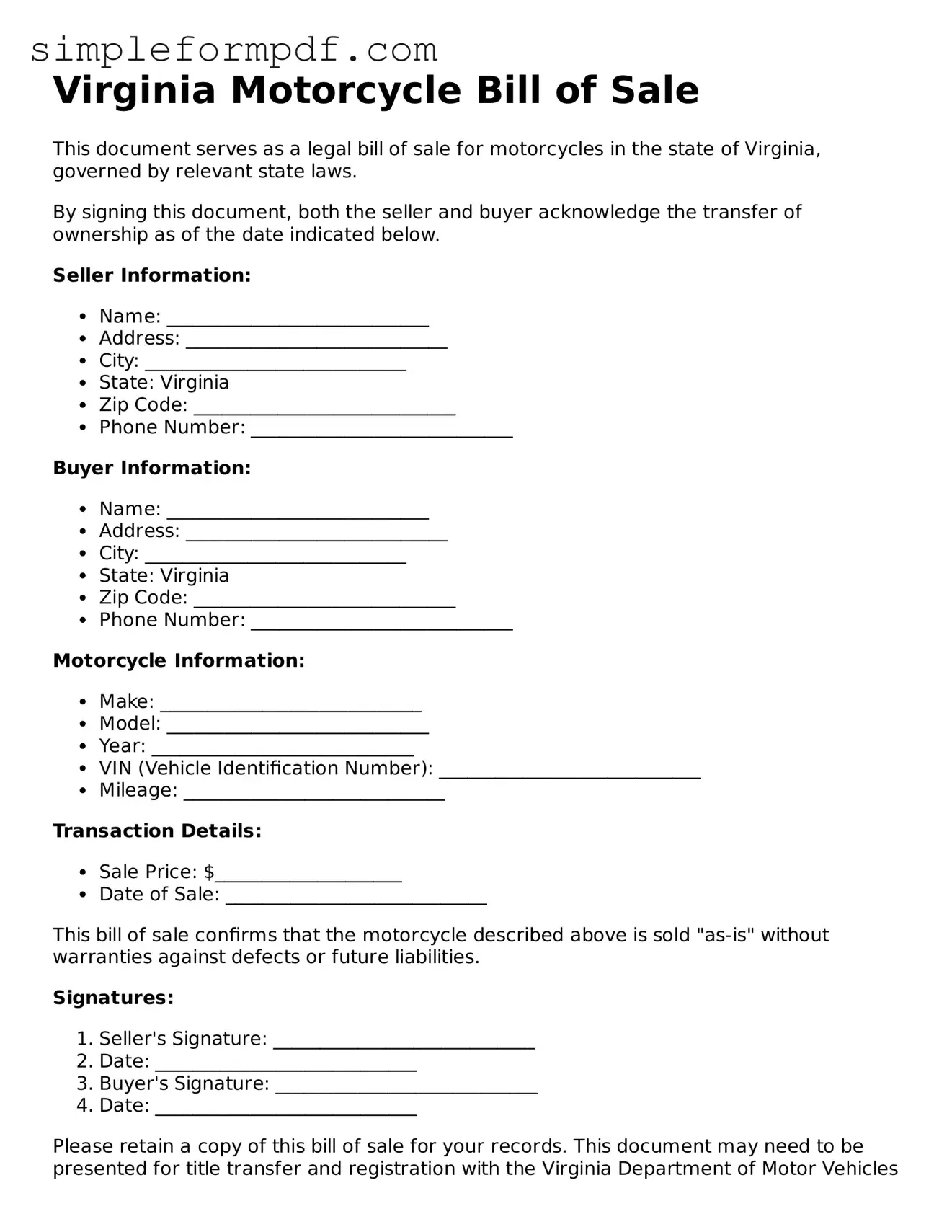Virginia Motorcycle Bill of Sale
This document serves as a legal bill of sale for motorcycles in the state of Virginia, governed by relevant state laws.
By signing this document, both the seller and buyer acknowledge the transfer of ownership as of the date indicated below.
Seller Information:
- Name: ____________________________
- Address: ____________________________
- City: ____________________________
- State: Virginia
- Zip Code: ____________________________
- Phone Number: ____________________________
Buyer Information:
- Name: ____________________________
- Address: ____________________________
- City: ____________________________
- State: Virginia
- Zip Code: ____________________________
- Phone Number: ____________________________
Motorcycle Information:
- Make: ____________________________
- Model: ____________________________
- Year: ____________________________
- VIN (Vehicle Identification Number): ____________________________
- Mileage: ____________________________
Transaction Details:
- Sale Price: $____________________
- Date of Sale: ____________________________
This bill of sale confirms that the motorcycle described above is sold "as-is" without warranties against defects or future liabilities.
Signatures:
- Seller's Signature: ____________________________
- Date: ____________________________
- Buyer's Signature: ____________________________
- Date: ____________________________
Please retain a copy of this bill of sale for your records. This document may need to be presented for title transfer and registration with the Virginia Department of Motor Vehicles (DMV).
